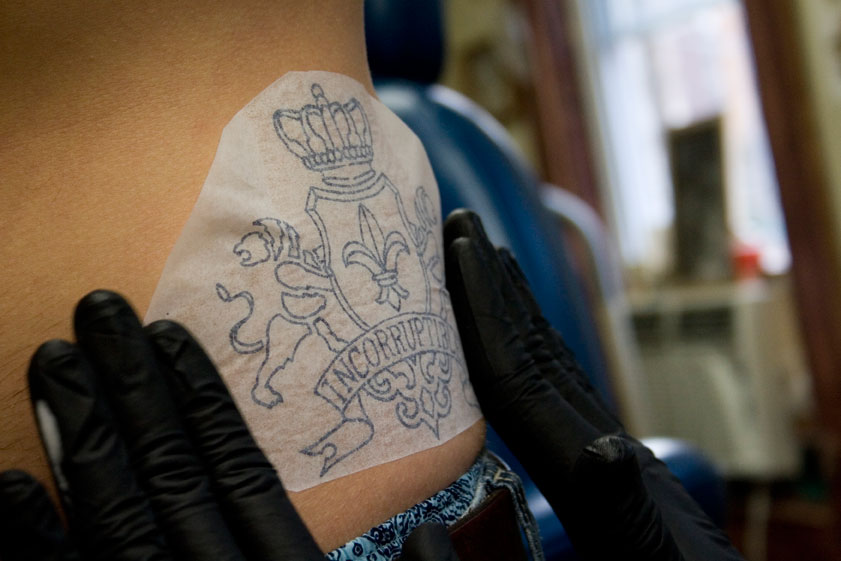 |
|

| Majestic Makeover |
| En Pointe |
| Menace to Masterpiece |
| A Way with Words |
| The Art of Giving |
| Making it Write |
| Tattoo Taboo? |
Tattoo Taboo? Redefining Body Art |
||||||
| Continued... | ||||||
“That affects the detail you can achieve and they also hold better in the skin. You think of the old sailor who has a tattoo but it becomes all blurry. There has been a lot of progress since that.” In the same way the artistic quality of tattooing has improved, the social view of tattoo artists has progressed. Thanks to the growing tattoo industry, the presence of popular shows and art programs focusing on tattooing, tattoo artists are no longer confined to the big top. “One hundred years ago or so tattooists were like sideshows and at circuses; they weren’t considered artists in the least. But now there are people tattooing who are art school grads and they’ve become known as tattoo artists,” Siewert said. Though art school is an option for getting started, artists Hanson, Siewert, John Kid and Barry Jaeger all said apprenticing is the best way to get into tattooing. Hanson, who opened his shop about 20 years ago, compared a tattoo apprenticeship to how artisans in the middle ages learned their trades. The artists have inherent artistic ability, but learning the intricacies of working on a living canvas is something an artist would have to pick up from a mentor and with practice.
“There are tattoo schools, but it’s best to learn from someone who’s been doing it; to get real-life experience,” Siewert said. He held an apprenticeship for a few years but did not enter the business in the typical fashion. “My friend was dating a guy who worked at a shop, so I’d bring in drawings I did for my own tattoos. He told me my artwork would convey well as a tattoo. I just sort of came in the door, got a machine and started tattooing,” Siewert said. While Siewert suggests being an apprentice for a year or two before tattooing customers, he feels that there is no right or wrong way to get into the business. “Doing my first tattoo was probably the scariest experience I’ve had in my whole life,” said Smith. “Someone is letting you permanently adorn their body with something. And it’s something you’ve never done before.” As an art form, tattooing differs from other forms of expression - both the artist and the client drive the resulting artwork. The client generally provides the subject of the art while the artist enhances it with his personal touch. “Really anybody in the shop can do anything, but everyone has their own specialties or is inclined to do a certain kind of art,” Siewert said. “Like if someone came in and wanted a cross, everyone could do it for them, but each artist would produce a completely different cross.” Some customers are more particular with their requests, while others leave the design open to interpretation by the artist. The artist uses discretion to modify the design into the best possible tattoo. Jaeger said he’ll compromise with a client to get a workable design, but if the client won’t take his advice, he won’t do the tattoo. In the end, he said, it’s his product that will be walking around and he wants to be proud of it. Siewert said it’s up to the artist to know what is going to transfer well to skin. “Some people don’t understand when something is not going to translate well into this medium,” Kid said. “Not everything works for every medium, just like anything else. Designs have to meet certain criteria to be a tattoo.” A common problem is when people ask for tiny tattoos with a lot of detail. The artists have to advise their clients that it will end up looking like a blob once it settles into the skin. “I’d prefer to tattoo bigger pieces so I can be more creative and more expressive with it than just a little shape,” Siewert said. |
||||||
About Us | Contact Us | Business Partners | Archives | Sitemap
Copyright 2007 Curb Magazine
